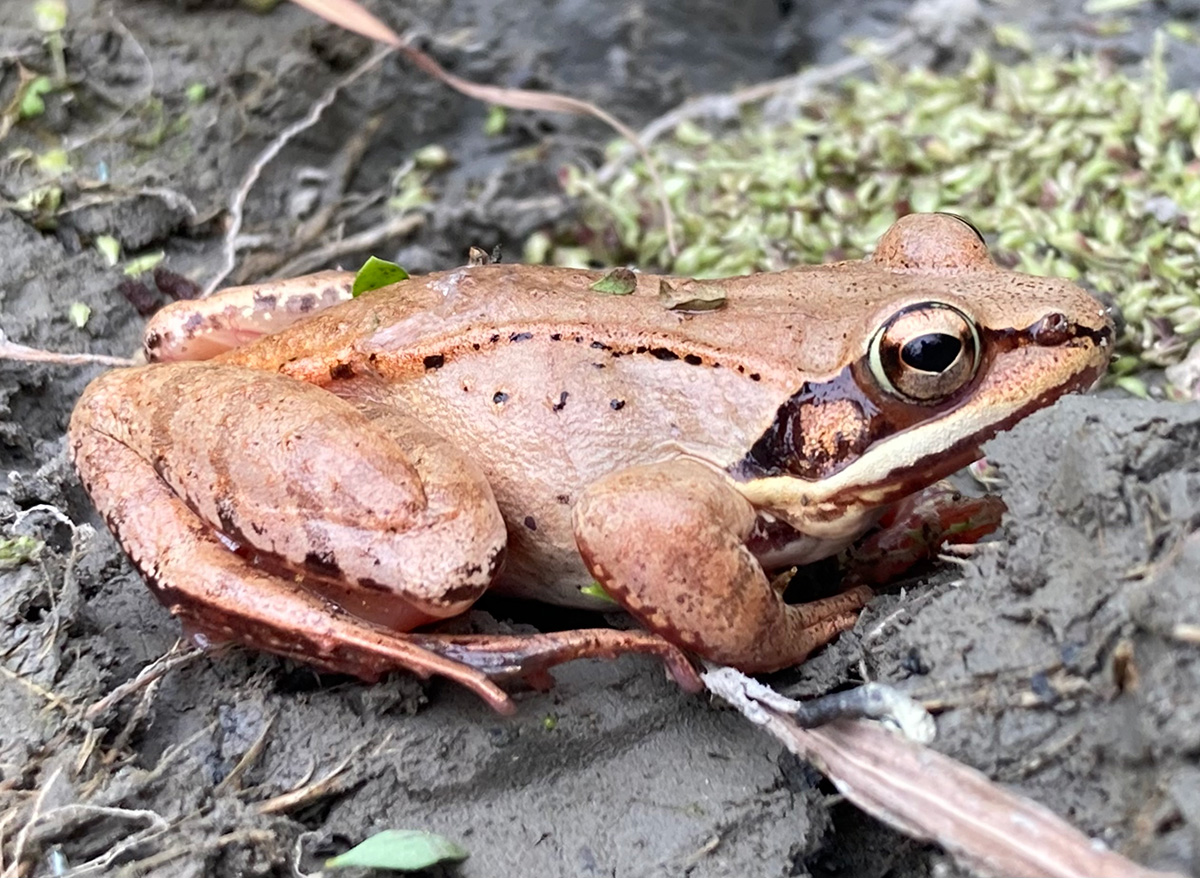Disease Dynamics in Amphibian Populations
Professor Myra Hughey and Research Assistant Fi McKenzie

Batrachochytrium dendrobatidis is a pathogenic fungus that impacts amphibians (frogs, salamanders, and caecilians) around the globe. In some species of amphibians, infection with B. dendrobatidis leads to chytridiomycosis, or chytrid for short, a disease that can be deadly for the host. Worldwide, hundreds of amphibian species are in decline or near extinction due to the spread of chytrid. Other species, however, seem to be able to coexist with the fungus, and never or rarely develop signs of disease even after they become infected.
Vassar students and faculty are working together with the Preserve to see if chytrid is present in our local amphibian populations. This research involves numerous hours of catching and swabbing frogs from permanent and ephemeral ponds around the Preserve and Vassar’s campus. DNA is extracted from these swab samples to test for the presence of the chytrid fungus. These data are being collected as part of a long term project monitoring to better understand how infection and disease dynamics may shift with changing climatic conditions in this region.